By Pamela Burke/December 2, 2010
Siena Anstis, pictured above on Lake Bunyonyi in Uganda, began the “Women of Kireka” jewelry-making project in 2008 in Kireka near Kampala. Women with a talent for beading were working in the stone quarry there under arduous conditions. They had fled from the northern part of Uganda during a brutal war where their husbands were killed and children abducted.
A strong believer in human rights’ advocacy, Siena joined with Project Diaspora to help 20 women from Kireka turn their beading talents into a profit-making venture through the power of social media and the internet.
Photos on this blog were taken by Siena and Kim Bilmer.
“These women faced almost insurmountable obstacles but they have a tremendous ability to adapt. They are the voice of this business and are making it all possible.” Siena Anstis
Social media in the name of Twitter led me to Siena. I read a tweet by New York Times columnist Nicholas Kristof where he wrote he had bought all his Christmas presents early from the “Women of Kireka.” So I got to wondering just who and where these creative people were. And that search led me to my conversation with Siena in Montreal…
EYE: Siena, how did you get involved with the “Women of Kireka” ?
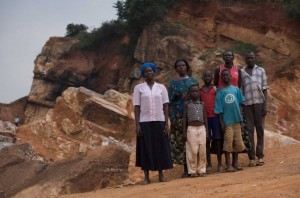 SIENA: The idea has come a long way since 2008. My father was an international diplomat so I had the opportunity to travel a lot when I was young. I was born in Ottawa, moved to Algiers, and lived in France and Sweden.
SIENA: The idea has come a long way since 2008. My father was an international diplomat so I had the opportunity to travel a lot when I was young. I was born in Ottawa, moved to Algiers, and lived in France and Sweden.
I started getting involved in human rights’ issues while studying journalism at Concordia University in Montreal. I continue to pursue it now as a student at McGill University’s Faculty of Law. It was this interest in journalism that led me to northern Uganda in 2007.
This project began a year later when by chance I was introduced to these women who were working in the quarry. They were a close group that had experienced a difficult war involving one of Africa’s most feared militias, the Lord’s Resistance Army. They needed another source of income to support their families.
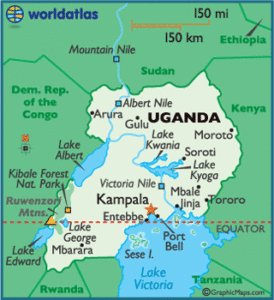
EYE: Did the project start out as a jewelry venture?
SIENA: No, in the beginning we decided on a tailoring and chicken rearing venture. But many of the women were doing beading so it seemed like a natural continuation. I thought their jewelry was amazing and beautiful.
At first I was on my own but then joined up with Teddy Ruge and Tracy Pell of Project Diaspora. We would all sit down and see where the women wanted to take the business and what would be most profitable.
This type of beading was becoming a popular thing; it was a new type of jewelry. They were making and selling it on their own. Some of the women had been doing other small enterprises before to make money.
Unfortunately, they weren’t able to buy new products and ended up back in the quarry where they found work. So beginning a jewelry business was another way they could make a living.
EYE: Where do the women live?
SIENA: In the slums on the side of a hill in Kireka which is part of the Acholi Quarter outside of Kampala. They live a difficult existence there with little plumbing and sporadic electricity. They use paraffin lamps.
“It’s quite frightful for the women and children. They chop big walls of rock up into blocks and then carry them up.”
EYE: What are the conditions in the quarry? “The Rock Breakers of Kireka” video on YouTube shows the difficult working situation there.
[youtube=https://www.youtube.com/watch?v=CYVOPQ-qD6E]
SIENA: It’s quite frightful for the women and children. They chop big walls of rock up into blocks and then carry them up. The stones are pounded into small pieces for gravel. We were once considering trying to get better workers’ rights in Kampala, but everyone needs a job. They might get pushed out if they protest too much. It’s a very difficult situation.
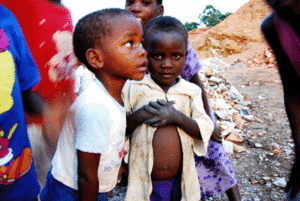
EYE: Would they leave the quarry if the project becomes successful?
SIENA: They are very talented but they don’t have capital. Most of them work in the quarry part-time.
It wouldn’t be good for anyone to leave their main income until we know how the beading business does over the next year.
These women can earn in three days of making jewelry the equivalent of three to four weeks of crushing rocks 12 hours a day.
EYE: What do you hope that they will gain through this project?
SIENA: A sense of self determination. We are just the facilitators. These women have faced almost insurmountable obstacles but they have a tremendous ability to adapt. They are the voice of this business and are making it all possible.
EYE: Describe the intricate beading process. Not only do they bead but they make the beads.
SIENA: It’s quite lengthy. They use colorful paper that they find that’s basically extra and leftover.
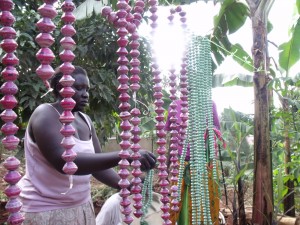 They cut the paper; then they roll around three to six beads per minute. Some take a single strand of paper and others up to 15. Then they varnish each bead between three and seven times. This can take a few days.
They cut the paper; then they roll around three to six beads per minute. Some take a single strand of paper and others up to 15. Then they varnish each bead between three and seven times. This can take a few days.
Finally the beads need to be strung. The necklaces contain between 15 and 325 beads. Some can be made fairly quickly in 20-30 minutes. The more complicated and the more beads, the more time and concentration it takes. Elders who have 325 beads per necklace can take several hours to string.
EYE: How is the business supported?
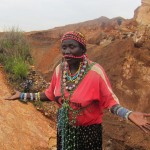
SIENA: Teddy and I used donations to get started. That money went into investing. In the beginning we bought the necklaces off the women. Now we run it as a business. We keep 15 percent from every sale and that goes back in to buy supplies, rent, school fees, etc.
In the long run ideally we’ll pay individual salaries. If we get a large order, then we’ll divide it equally to whoever works to make the jewelry. We make nothing.
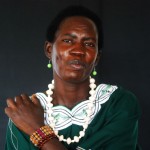
We’ll probably do this until we’re at a profit level and then we can invest in a full-time coordinator who can be in Uganda all the time. We have fantastic interns who do a lot of the work. They go to Uganda for three months and work for free.
“Their life is very tough. The hardest part is the simple things like paying school fees.”
EYE: What’s your goal?
SIENA: Hopefully that beading will be the central activity for these women and they will get the opportunity to stay out of the quarry. Most are single mothers whose husbands died or were abducted. They are middle-aged and older and have 3-4 children.
Their life is very tough. The hardest part is the simple things like paying school fees. These women want their kids to be able to go to school. You can learn about their personal stories and struggle on the website which we just recently put up.
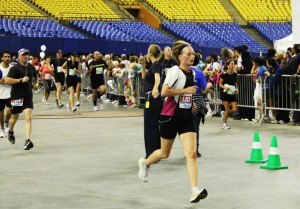
EYE: Are they making money?
SIENA: The business is taking off. Their incomes have improved. Last year it helped with school fees. I spent last summer in Uganda getting the business going and training for a marathon that was held in Montreal recently that raised some money.
EYE: What challenges do you face?
SIENA: The financial problems are slowly going away. The biggest challenge is that the business is international.
We’re in North America. The interns are in Uganda. We work across international boundaries. Culturally we all come at things with different working standards.
As advisors, we have western ideas on how to market it abroad. The product has to be of the highest quality. We are building strong relationships, but there are can be cultural tensions.
“I never questioned my interest in this project. Everyone has an obligation to others to uphold each others rights.”
EYE: Do you see a change in these women?
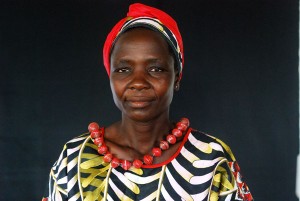
SIENA: The women seem more confident and work better together. They have started to speak up. They are now considering other things that they want to do like opening bakeries, getting into knitting, etc.
As they save capital, they can take their money and invest. They’re developing relationships and some may eventually open up their own businesses.
EYE: What has kept you involved in this demanding venture?
SIENA: When I was growing up in my formative years, my mother and father both emphasized the importance of human rights. I never questioned my interest in this project. Everyone has an obligation to others to uphold each others rights.
EYE: Will you stay with this project?
SIENA: I’d like to make the “Women of Kireka” grow and develop. It’s an exciting business right now. Our online sales are our main source of revenue. We’re hoping to do well during the holidays and have started shipping orders directly from Uganda while waiting for our big stock order to come in.
Take a look at our website and see all the beautiful jewelry these women have made. Their dedication to this business will give them hope for the future.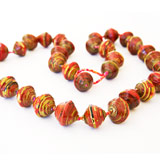
EYE: Good luck Siena! I hope the “Women of Kireka” jewelry business is a big success! People can find you here on twitter.
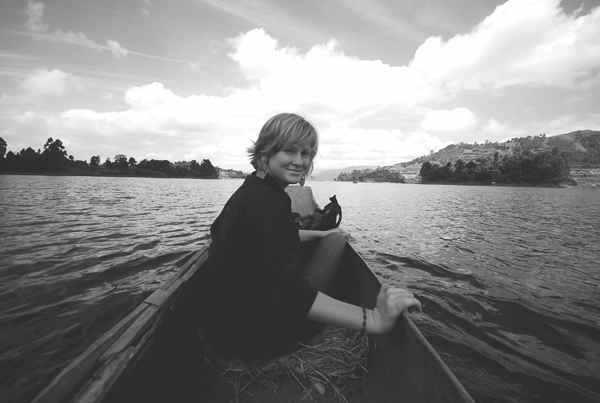
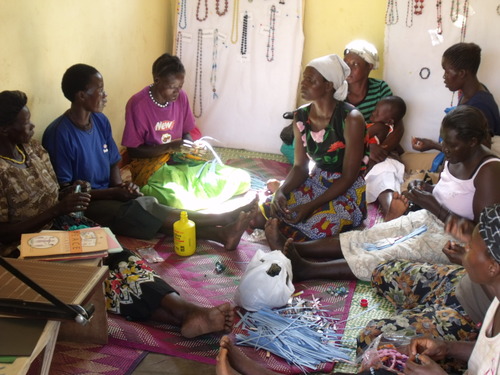
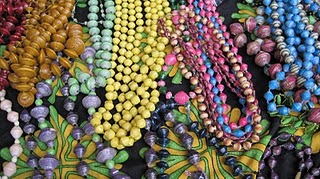

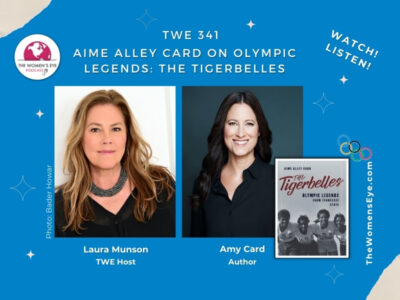

Leave a Reply